Morocco Education: Leading University in Morocco
President of University of Sidi Mohamed Ben Abdellah, Esserrhini Farissi
We have more than 60 000 students today, and this figure may go up to 100 000 in five years.
Interview with Esserrhini Farissi, President of University of Sidi Mohamed Ben Abdellah
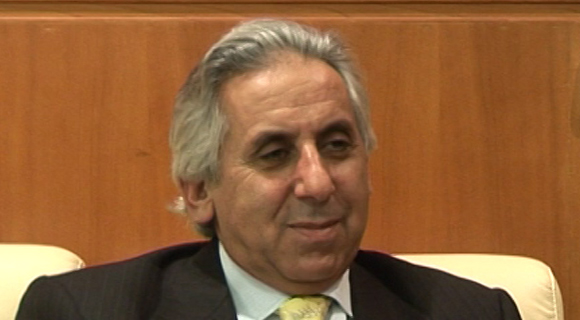
Certain countries of the Arab world have plans to become regional centers for education: the United Arab Emirates attracted prestigious universities such as the Sorbonne, Lebanon is also known for its good universities. What are Morocco’s regional prospects in the field of education, what makes it unique?
Morocco is in a strategic, very different to that of Dubai or Lebanon situation. It is Europe’s neighbor; only 14 km away from Spain. Morocco’s situation is unique in that it is internationally oriented. We benefit from:
• a strong presence of international students: mostly African students, but also students from much further countries such as Indonesia, Malaysia, Bangladesh…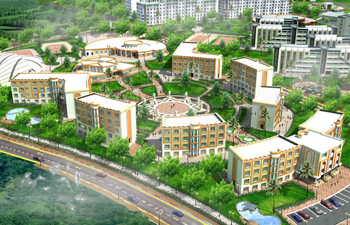
• a strong presence of instructors and researchers abroad, especially in Europe, but also in the United Arab Emirates, for example.
• a dramatic increase in the number of students (20% since last year), unlike France and other European countries.
• a strong presence of Moroccan students abroad.
• tight ties with the EU: Morocco has a choice position in the European educational system.
For example here at Sidi Mohamed Ben Abdellah University, one of our Masters programs is accredited by the EU. We even have 11 of our students studying at Sophia Antipolis, who will then complete the second year of their Masters here in Fes. They were interviewed by FR3 [French TV Channel].
Since the law 0100 was adopted in 2003, Morocco adjusted to the European LMD System, which means our diplomas are now recognized by the EU. We have achieved a lot of things since then.
We are now in the process of reinforcing this reform with the « Emergency Plan », which aims at bringing Morocco’s academic standards up to speed with other competitive academic systems. We put a lot of resources into that. Morocco is now involved with private universities as well:
• the International University in Rabat;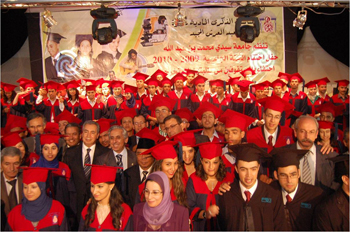
• a project of creating a Euro-Mediterranean University just like the one in Piran (Slovenia) here in Fes, as part of the Union for the Mediterranean partnership program. Besides, Fes has a very old academic tradition, since the first university of the Muslim world was created here in 859, before Bologna even.
“
We have more than 60 000 students today, and this figure may go up to 100 000 in five years.
“
How do Moroccan universities attract international students?
It’s very simple: since forever, Morocco has been open and tolerant. Students feel at home. African students that come here don’t feel any distinction is being made between them and Moroccon students. We want international students, who are away from their families and customs, to find comfort when they come.
I think students find that warmth here in Morocco. Hospitality is essential in our culture: when someone knocks on your door, you have to smile at them and say « marhaba » [welcome]. We also benefit from a relatively central geographical situation: we are close to Europe, to Africa, to the Middle East.
What are Morocco’s biggest challenges at the moment?
To tell you the truth, we’re most challenged by ourselves. We have a lot of assets: about 61’000 students in our university, state-of-the-art technology laboratories, very good researchers… all that potential needs to be used to our advantage. We have to be very demanding of ourselves in order to exploit our wealth and make it known to the rest of the world. Globalisation and competitivity are our biggest challenges.
The world ranking does not reflect the quality of our university. We must therefore promote it, « commercialize » it, have a marketing approach of our advantages in terms of scientific research. We have highly qualified researchers and I don’t want their work to be locked in laboratories:
I want it to serve regional and national development, and even beyond. For this reason, we created a cluster specialized in environmental matters, water management and sustainable development within the university, in collaboration with French firms as well as highly qualified Moroccan collaborators.
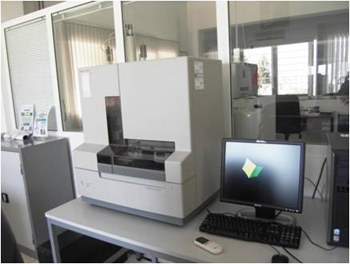
We want to provide services to local authorities as well as private companies. We are currently trying to have our center for analysis licensed in order to be recognized by our partners. The 80 laboratories we have are another advantage, but also a weakness in that our efforts are scattered. So the challenge is to gather our efforts in order to become more competitive towards national and international competitors. This challenge is reflected by the creation of various domestic clusters:
• a cluster was created to promote cultural heritage. 7 Moroccan universities and 3 European universities (Spanish, Italian and Greek) formed a consortium and created a Masters specialized in cultural heritage.
• the creation of the first Institute for Medicinal and Aromatic Plants in Morocco. 25 hectares of experimental farms and a tree nursery are attached to it. Its purpose is to substitute cannabis cultivation with medicinal and aromatic plants that have an equal value added. For example, we can offer farmers to grow saffron, which has a strong value added, instead of cannabis.
• in the IT field: collaboration plans with Europe.
What is your vision of this university in 5 years, if all your plans go well?
The « Emergency Plan » meets the needs for government expenditure, which will allow us to bring our institution up to scratch equipment-wise. We also need to:
• reduce the failure rate among students and promote scientific research. We are demanding of ourselves since financial support depends on the quality of our laboratories.
• improve student management with better individual support and the creation of new institutions on the outskirts of Fes in order to ease the burden of the city due to the size of its institution. We have more than 60’000 students today, and this figure may go up to 100’000 in five years.
• improve students’ life. We have an ambitious project to develop sport qualities of our students. This project embraces a modern sports hall equipped with all logistic and sportive means about to be inaugurated. Its cost is 16 million dirhams. We are building a soccer field equipped with synthetic grass and night lighting, thanks to the 8 million dirhams budget allocated by the Ministry of Sports. Besides, a number of sport faciltites are to be introduced very soon including a semi-olympic swimming pool, 8 tennis courts, 2 handball courts, 2 basketball courts, 2 volley ball courts along with a clubhouse where students’ different talents can be best polarized, embraced and thus improved. For these last mentioned sport facilities, we hope that the Ministry of Sports would provide additional support ofcourse together with other sponsors.
• turn to the Mediterranean: we want to be part of a new Arab theaters network, organize international tournaments. • diversify our international relations, with Indonesia, Japan, the United Arab Emirates, china, USA…
• promote our researchers. We have about 1200 instructors, some of them are pioneers in their field; but so far we didn’t promote and advertise them as they deserve.
• promote our most talented students, including in the sports department. I believe a good student should take care of their mind and body, while being interested in music and culture… this is my Greek side.
• to adjust available courses of studies to the country’s specific needs for development. This process has already started with the graduation this year of 112 state engineers.
• have an entrepreneurial approach to our university’s 13 institutions, based on performance and productivity.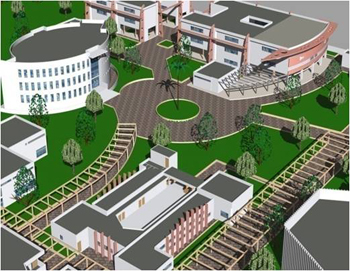
• restructure financial and administrative management. Do you know that all 61’000 students don’t pay any fees? Our financial support comes from the government and our collaboration with the EU. We benefit from a large budget, and we must manage it well.
• Finally, our real challenge by 2015, and despite the quick extension of the university’s structures and its sustainable updating, the augmentation in the number of students would inevitably saturate the new capacities of reception. Our tendency, thus, is directed towards constructing a university city in the outskirts of Fes, namely Ain Chegag area; a strategic spot that is close to the aerport.
The University City will be an area of 100 hectares to fully satisfy the academic needs of students, professors and administrative staff. In this regard, we are negotiating with president of Ain Chegag Municipal and the governor of Sefrou city in order to finalize modalities of aqcuisition of the project’s field.
All this is meant to provide our students with a well-equipped outlet by 2015. Beside government funding, we rely on both national and international sponsors to give this ambitious project all the chances to be realized.